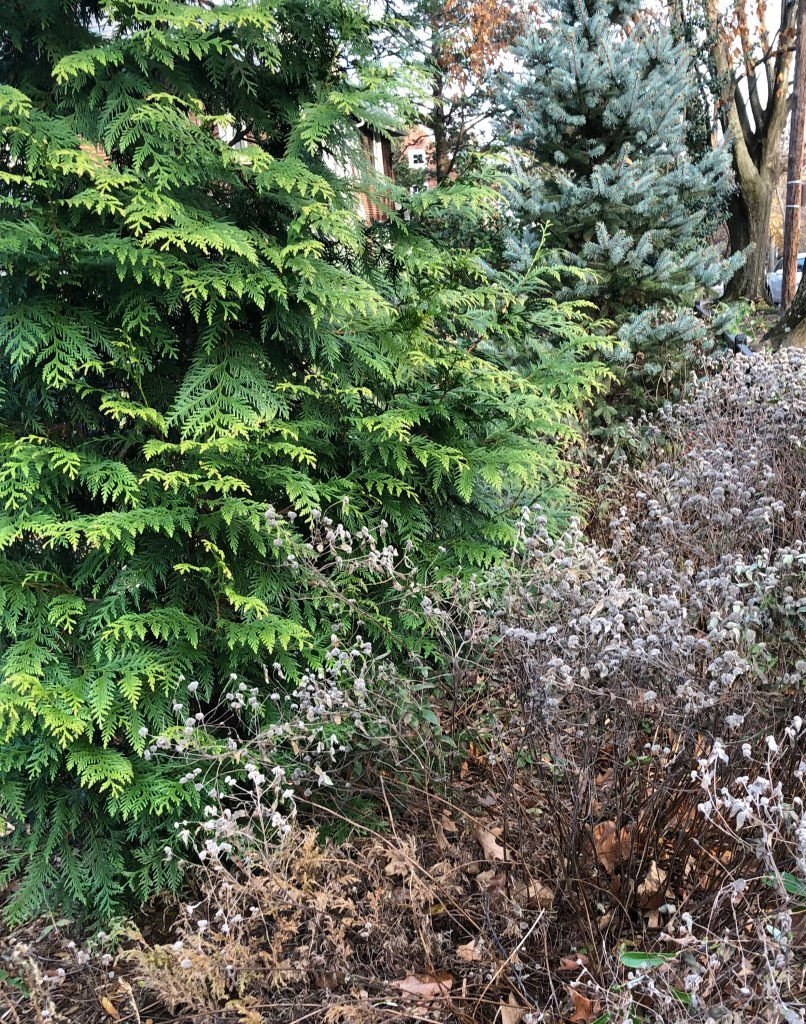Maryland and Virginia Native Foliage: It’s All in the Contrast
- Nuts for Natives
- May 28, 2020
- 3 min read
Updated: Jul 12, 2020

As a new gardener, I was totally drawn to the flowers. Flowers of any color and type! In the Chesapeake watershed, we can have native flowers blooming in our gardens from late March through the early November and it’s totally tempting to pursue. Gardening experts, though, often recommend you establish the bones of your garden — hardscape, trees and evergreens — first, foliage next and flowers last. While most of my gardening has gone in the opposite order(!), I have come to appreciate how foliage makes a garden interesting when there isn’t a profusion of blooms.
From what I’ve read, the trick to creating an interesting garden when flowers aren’t blooming is to add contrast through mixes of colors, shapes and textures. Native plants hit the sweet spot.

The two coral bells (Heuchera villosa ‘Autumn Bride’) and (Huechera americana ‘Dale’s Strain’) are different in leaf size and color. When they are planted near a different textured plant, the feathery foliage of evergreen dwarf eastern arborvitae (Thuja occidentalis), each seems to stand out yet, together, they harmonize.

This is a simple contrast in color. The green and purple (Heuchera ‘frosted violet’) coral bells in the flush of spring growth somehow seem to show each other off.

This dwarf common juniper (Juniper communis) is planted next to coral bells (Heuchera ‘caramel‘) for color, shape and texture contrast.

This photo from the High Line in New York City shows mountain mint (Pycanthemum) planted in front of an unidentified grass and fall blooming aster. Three very distinct shapes, textures and colors yet they look good together.

Here mountain mint that has dried in late fall is planted in front of an eastern arborvitae and a Colorado blue spruce (Picea pungens) which is not native to the Chesapeake. The differences in color, shapes and textures make each standout.

Here in late fall, the spiky foliage of the blue wood sedge (Carex flaccosperma) contrasts in color, shape and texture with coral bells ‘frosted violet’.
By contrast, these combos I tried aren’t working. On the left, the coral bells and oak leaf hydrangea (Hydrangea quercifolia) are too similar in color and leaf shape. It’s the same on the right between the coral bells and wild ginger (Asarum canadense). The shape of each of these is striking yet when put together, uninteresting.

Moving the wild ginger to a spot among a couple of seersucker sedges (Carex plantaginea), makes the wild ginger stand out. It is a different green than the sedge and the contrasting leaf shapes makes both plants look more interesting. Leaf shapes really make a difference.

This combo above shows the chocolate cultivar of white snake root (Ageratina altissima) planted with dwarf crested iris (Iris cristata) and blue eyed grass (Sisyrinchium angustfolium). There is variety in color and leaf shape, yet the leaves of the iris and blue eyed grass are similar enough to make this a poor combo. Take out the grasses or the iris, and this would be much better.

Here, native pachysandra known as Allegheny spurge (Pachysandra procumbens) and coral bells ‘palace purple’ (Heuchera micrantha var. diversifolia “Palace Purple‘) make a strong pairing with different color, leaf shape and texture. These basically act as a ground cover in shade and will keep going all growing season long.
The possibilities seem endless. I know you have your favorite combos too. If you are so inclined, please share them in the comments.
That’s an awful lot of foliage for one day so it seems as though a buzzy moment of zen is in order!



















Comments